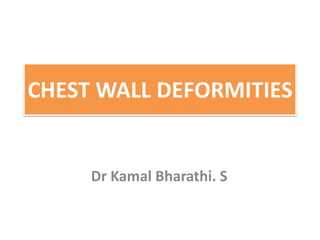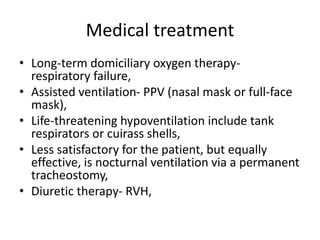This document discusses various chest wall deformities and conditions that affect the structure and function of the chest wall. It covers scoliosis, pectus excavatum, ankylosing spondylitis, flail chest, thoracoplasty, pectus carinatum, Poland Syndrome, and chest wall tumors. For each condition, it describes the presentation, pathophysiology, clinical features, treatment options, and relevant anatomy and imaging findings.





















































































